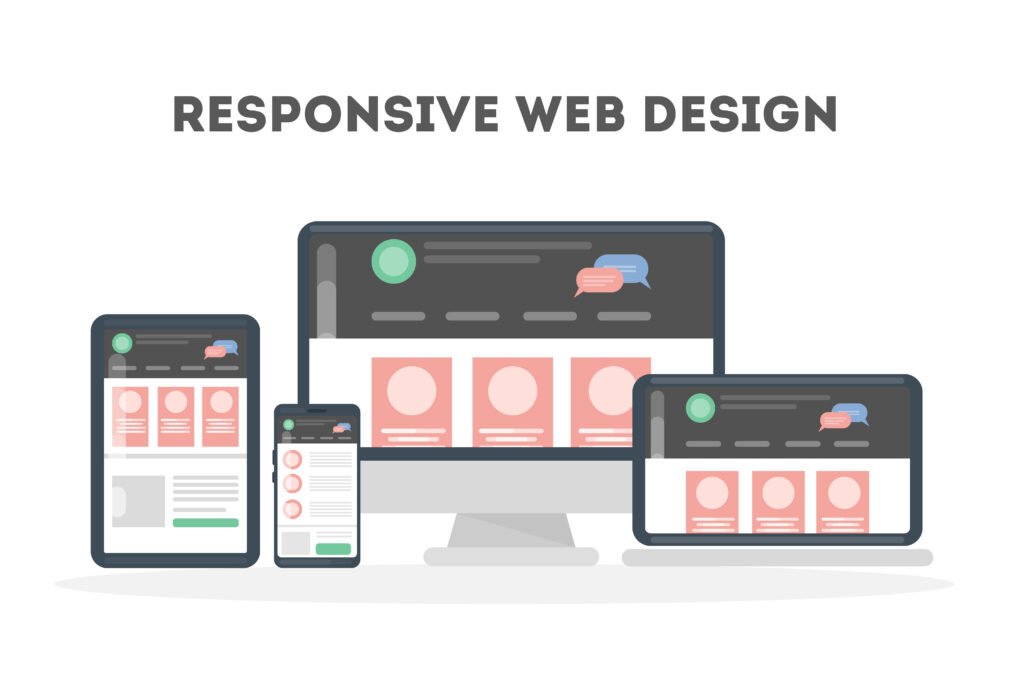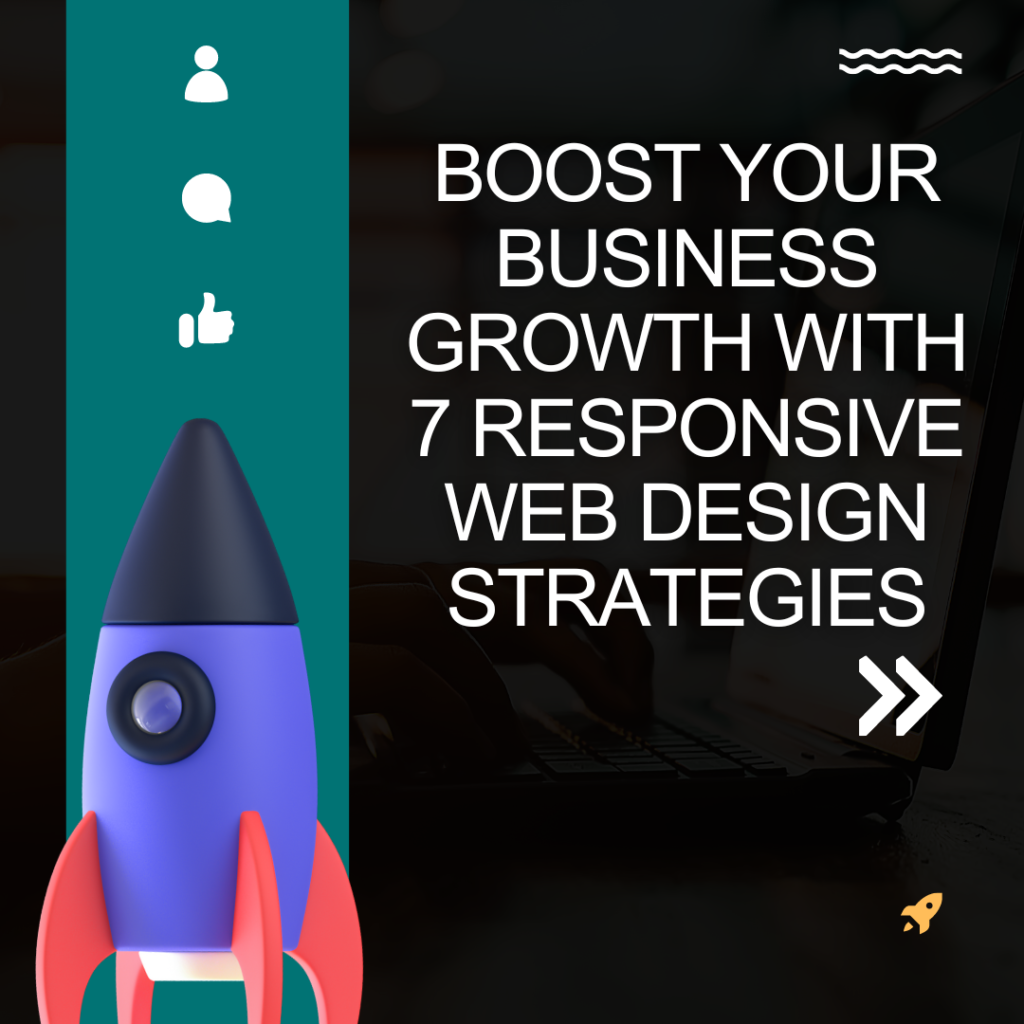Introduction
In today’s digital age, responsive web design has become a essential for business growth. With the majority of internet users accessing websites through various devices, from desktops to smartphones and tablets, it’s imperative for businesses to ensure their online presence is optimized for all platforms. A responsive website not only enhances user experience but also contributes significantly to search engine optimization (SEO), thus driving organic traffic and boosting conversions. Here, at Flawless Infotech, we understand the critical role that responsive web design plays in maximizing business growth, and we’re committed to helping businesses achieve their goals through strategic web development.
What is responsive web design?

Responsive web design is an approach to web development that ensures a website adapts to the user’s device and screen size. Instead of creating separate websites for different devices, responsive design uses flexible grids, layouts, and media queries to dynamically adjust the content and layout based on the device being used.
Importance of responsive design for business growth
With the increasing reliance on mobile devices for internet access, having a responsive website is crucial for businesses looking to stay competitive. A responsive design ensures that users can easily access and navigate your site regardless of the device they’re using, leading to improved user experience, higher conversion rates, and ultimately, increased sales and revenue.
Benefits of Responsive Web Design
- Enhanced user experience (UX)
A consistent and user-friendly experience across all devices is offered by responsive websites, which can greatly increase user engagement and satisfaction. Through flexible design, users can easily find what they’re looking for and perform desired actions, like making a purchase or filling out a form, by adapting the layout, navigation, and content for different screen sizes.
- Improved mobile traffic and conversion rates
Having a flexible website is crucial for drawing in and keeping mobile consumers, as more and more people access the internet on smartphones and tablets. Because responsive design makes sure that people can quickly and easily access your site on their preferred device, it not only enhances the user experience on mobile devices but also helps to increase mobile traffic and conversion rates.
- Increases Social Media Connectivity
Responsive web design increases social media connectivity by ensuring that websites are accessible and easy to navigate across various devices, including smartphones and tablets. With responsive design, social media integration becomes seamless, allowing users to share content, engage with posts, and connect with others on social platforms regardless of the device they are using.
- Cost-effectiveness and maintenance
Maintaining separate websites for desktop and mobile users can be time-consuming and costly. Responsive design eliminates the need for multiple versions of your site, reducing development and maintenance costs in the long run. Additionally, because responsive websites adapt to changes in screen size and device orientation, they require less ongoing maintenance and updates.
7 Strategies for Implementing Responsive Web Design
1. Mobile-first approach
When designing a responsive website, it’s essential to prioritize the mobile experience. A mobile-first approach involves designing for the smallest screen size first and then scaling up for larger devices. By starting with the mobile layout, you can ensure that your site is optimized for smaller screens and progressively enhanced for larger ones.
2. Flexible grids and layouts
Using flexible grids and layouts is key to creating a responsive design that can adapt to different screen sizes. Instead of fixed-width layouts, which can break on smaller screens, flexible layouts use percentages or em units to define column widths and spacing, allowing content to resize and reflow based on the viewport size.
3. Media queries for device adaptability
Media queries are CSS techniques that allow you to apply different styles based on the characteristics of the user’s device, such as screen size, resolution, and orientation. By using media queries, you can create responsive designs that adjust the layout, typography, and other elements to provide the best possible experience on any device.
4. Optimizing images and content
Large images and excessive content can slow down your website and detract from the user experience, especially on mobile devices with limited bandwidth and screen space. To ensure optimal performance and usability, it’s essential to optimize images and content for the web by using appropriate file formats, compression techniques, and lazy loading.
5. Fast loading times
Mobile users have little patience for slow-loading websites, so it’s crucial to optimize your site for speed. This includes minimizing HTTP requests, reducing server response times, and leveraging browser caching to deliver content quickly and efficiently. By prioritizing performance, you can improve the user experience and increase engagement and conversions.
6. Touch-friendly navigation
Mobile users interact with websites differently than desktop users, primarily using touch gestures instead of mouse clicks. To accommodate touch-based navigation, it’s essential to design your site with large, tappable elements and intuitive gestures, such as swiping and tapping. By making navigation easy and intuitive, you can enhance the mobile user experience and encourage users to explore your site further.
7. Cross-browser compatibility
In addition to being responsive, your website should also be compatible with a wide range of web browsers and devices. This means testing your site thoroughly across different browsers, operating systems, and devices to ensure consistent performance and usability for all users. By addressing compatibility issues upfront, you can avoid potential problems and ensure a seamless experience for everyone.
Case Studies
Examples of businesses benefiting from responsive design
- E-commerce retailer
By implementing a responsive design, an e-commerce retailer saw a 20% increase in mobile sales and a 15% decrease in bounce rates.
- Service provider
A service provider redesigned their website to be responsive and experienced a 30% increase in mobile traffic and a 25% increase in lead generation.
Measuring Success
Key metrics to track
- Page load time
The time it takes for your website to load on various devices.
- Bounce rate
The percentage of visitors who leave your site without taking any action.
- Conversion rate
The percentage of visitors who complete a desired action, such as making a purchase or filling out a form.
Tools for analyzing website performance
- Google Analytics
A powerful tool for tracking website traffic, user behavior, and conversion rates.
- PageSpeed Insights
A tool that analyzes your site’s performance and provides suggestions for improvement.
- BrowserStack
A platform for testing your website on real devices and browsers to ensure compatibility and performance.
Conclusion
In today’s mobile-first world, having a responsive website is essential for businesses looking to succeed online. By implementing the seven strategies outlined in this article, you can create a website that provides an optimal user experience across all devices, leading to increased traffic, engagement, and conversions.
Don’t let outdated design practices hold your business back – embrace responsive web design and watch your business grow.

